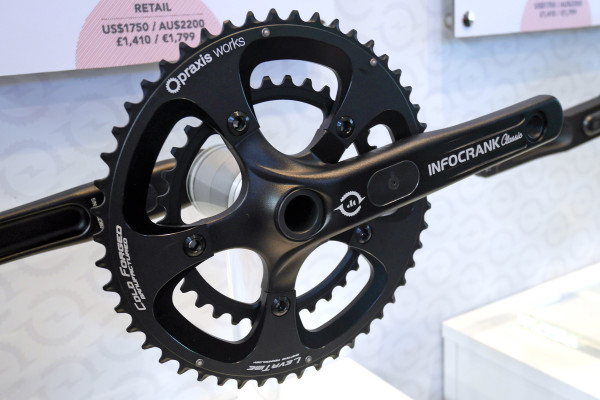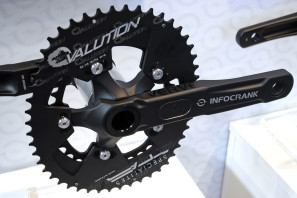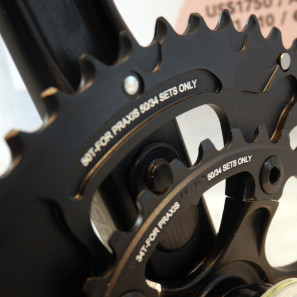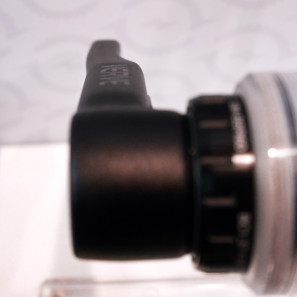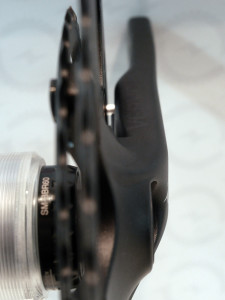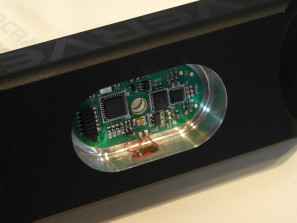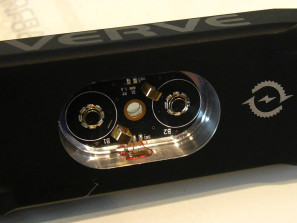The engineers at Verve behind the Infocrank, of which we have been pleased in our early tests, have expanded their offerings for compact and standard road BCDs in both of their axle offerings. They have also taken some of our early criticisms to heart and made a few small but important updates to their latest offerings that will make the power meters appeal to a broader pool of riders. Adding to those updates, they’ve responded to user requests for more crank length offerings and have taken that even one step farther.
Join us after the break for the full details, as well as update pricing across the range, and a new training plan service included when you buy the cranks. Plus, we got some interesting detail shots of the electronics that make the whole thing work…
So first off, the 30mm spindle Verve Infocrank that was their first product to market is now available in 110BCD and 130BCD to satisfy any manner of road rider (both 150mm Q-factor.) In our original talks with brand ambassador Magnus Backstedt a year ago, he said that he preferred the stiffer. larger axle over the 24mm version to the extent that he was riding on a semi-compact set of rings even though he missed his 53. Now it isn’t an issue, standard road is available with the bigger BB spindle (and big rings are even available for the compacts.) On the other side of that coin, the Infocrank Classics, at the top of the page with the 24mm spindle that slides right in as a replacement for Shimano bottom brackets, gets either 110 (147mm Q) or 130BCD (145mm Q) spiders as well. The 24mm Classics are especially useful for riders of traditional frames, as the smaller axle allows the use of internal electronic wiring harnesses on threaded BB frames. We had an early set of these on test, and the ease of replacing a set of Shimano cranks, made it simple to try them out on several bikes with little effort. Some people like the aggressive styling of the original; some prefer the more traditional look of the Classic; and now whatever your preference there is a power meter crank option for you from Verve.
The next bit here was one of our issues with the original Infocrank – the clearance it had for small chainrings. We reviewed the original with road rings last summer, but got a pair in to test for cyclocross late last fall (see a full review in the coming weeks) and ran into an obstacle when we went to put a set of Praxis 46/36 rings on it. The sending unit cover on the inside of the original cranks’ arms was dome-shaped and didn’t clear the smaller ring. It was usually only an issue for 48 or smaller big rings or solid TT rings, but we had to mod ours to make it work. In the pic at right you can see that there is no longer a domed cover (in between the two rings.) The new Sending Module gets an almost flat cover that has solved the issue.
Another update Verve has made was to the arms of the Infocrank Classic, both on the drive and non-drivesides. We spent some time on an early preproduction set that had the same Q-factor as these new versions, but had completely straight crank arms that were the maximum width right at the bottom bracket. This update tapers the arms out in the last 1/3 of their length, which results in a width reduction of about 3mm from either side. That might not really sound like a lot, but we only occasionally had issues with the heel or ankle of our shoes hitting the arms, so feel confident that this will totally solve the issue for most users. Another nice update for the Classic is that they are now black. Verve tried a silver finish on our preproduction testers in order to appeal to a classic aesthetic. While we love the classic look and high polish of traditionally styled cranks, like on the Athena gruppo that we recently tested, the silver Infocrank Classic frankly just looked a bit cheap. The black finish is probably more fitting for these tech-oriented cranks anyway.
All of the cranks have been available in 170, 172.5, and 175mm lengths, but in response to customers asking for shorter options Verve will soon make the original 110 and new 130BCD M30 cranksets available in 155, 160, and 165mm lengths as well. The new 110 Classics should be available in 165, 170, 172.5, and 175mm, while the 130 Classics will stick with just 170, 172.5, and 175mm lengths. All cranks typically come standard with a selection of Praxis rings, but now the compact 110BCD cranks will also have the option of traditional road 53/39 gearing with TA’s Syrius ring set. And the 130BCD M30s will also add a limited edition Praxis Time Trial 54/42 combo as an option.
OK, so the pricing note before the break was maybe not totally necessary as it was shown in that first image at the top of the page. No matter which crank you buy they are all the same price now: US$1750/AU$2200/£1410/€1800. The only difference is that the 30mm spindle versions include a Praxis BB, while the Classics do not. But, now also included in that price is a 3+3 month training plan, aimed to really get the full potential of training with power out of the purchase. Verve has been building their international network of training professionals, and really wants to see customers get the most out of their cranks.
We also got a pretty interesting look inside of the electronics that make the Verve Infocranks tick. Both the original and Classics share the same hardware that is installed in pockets precision machined mid-way through each crank arm from both the inside and outside faces. We outlined the tech a bit in our original review, but we didn’t take them fully apart to have a deeper look inside. Each crank arm gets four strain gauges (two on the inside of the arm and two in the outside) configured in a Wheatstone bridge arrangement. It is the differences in these four precision measurements that allows the measurement of power, while isolating out torsional forces and accommodating temperature changes. A close look at the strain gauge placement even shows the faint machined guide line for placing the gauges.
We’ve been pretty happy with the performance and lack of need for (any) maintenance or recalibration in our off-road testing. Keep an eye out for our full review in our lead-in to European cyclocross racing.
